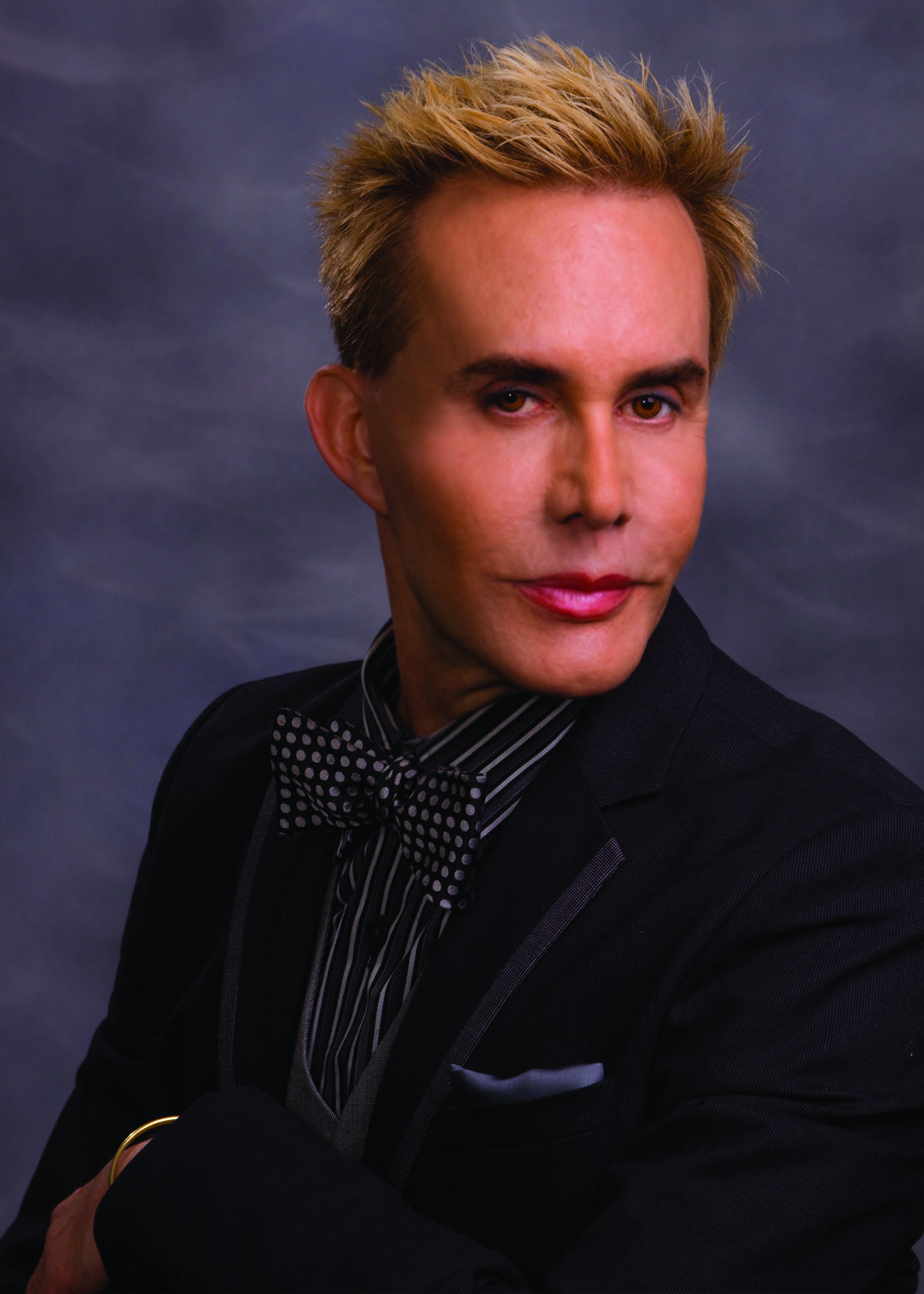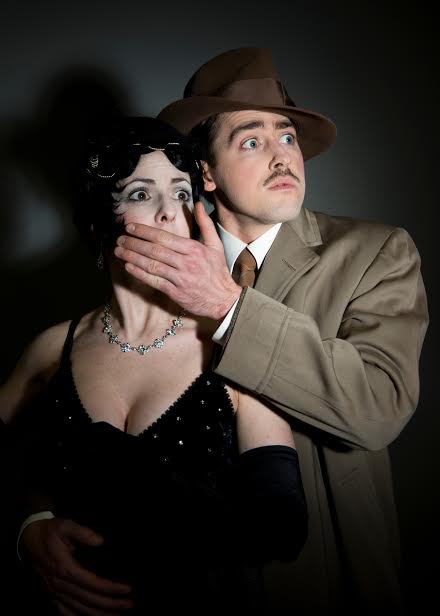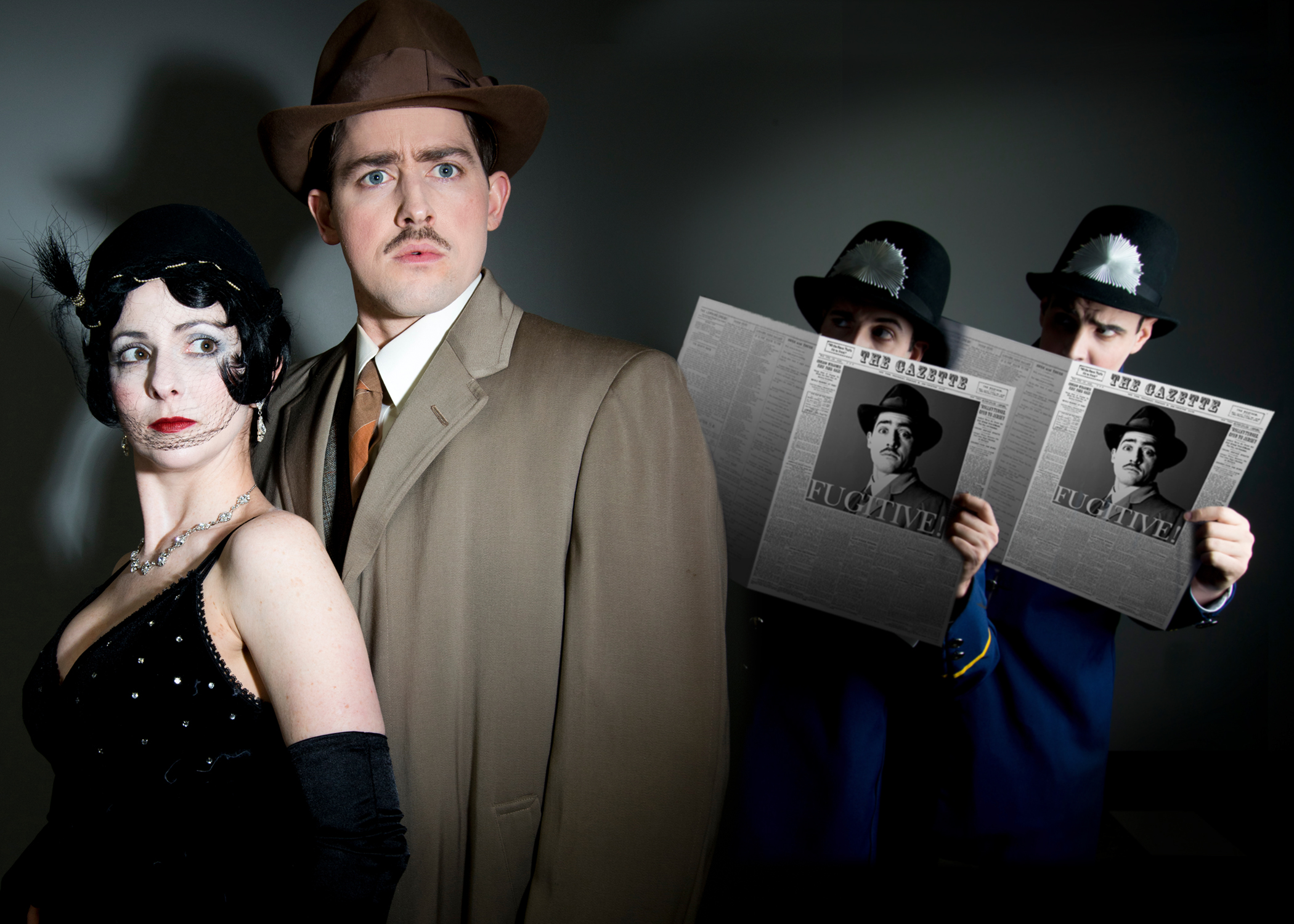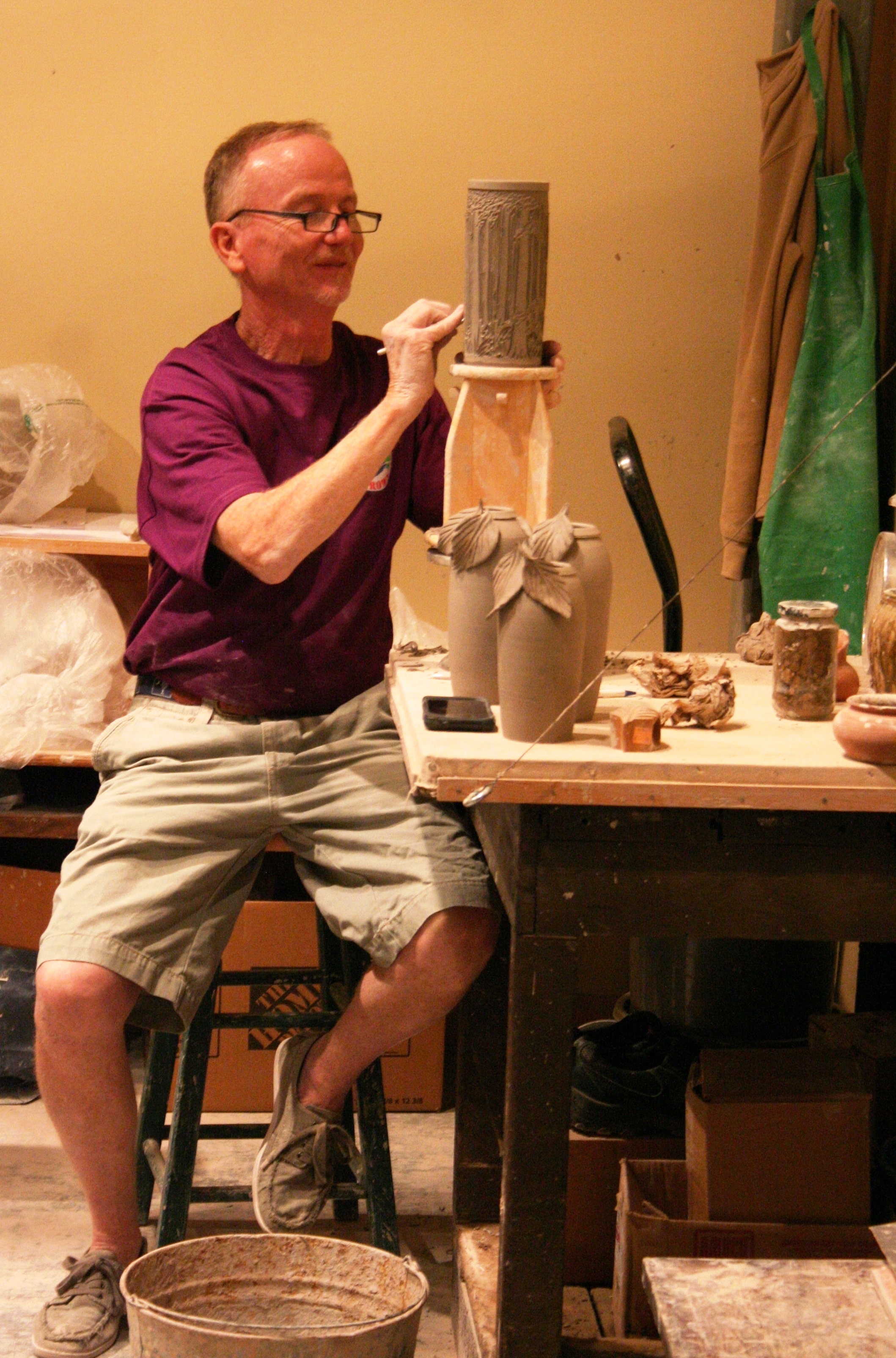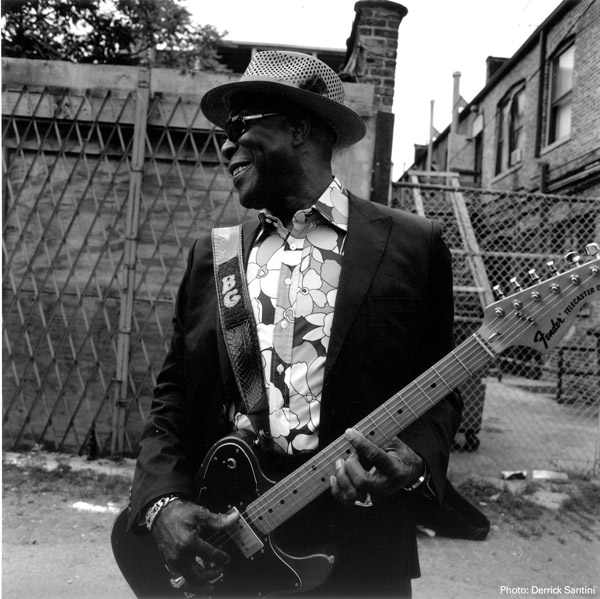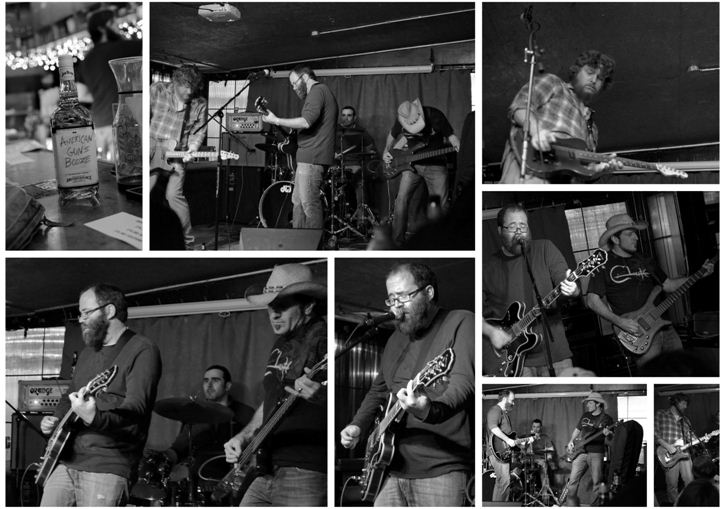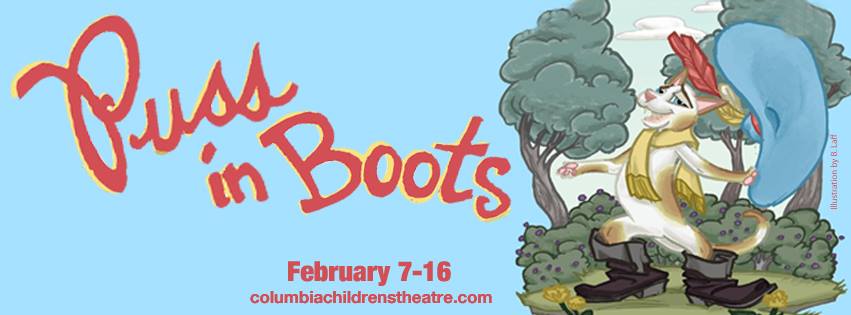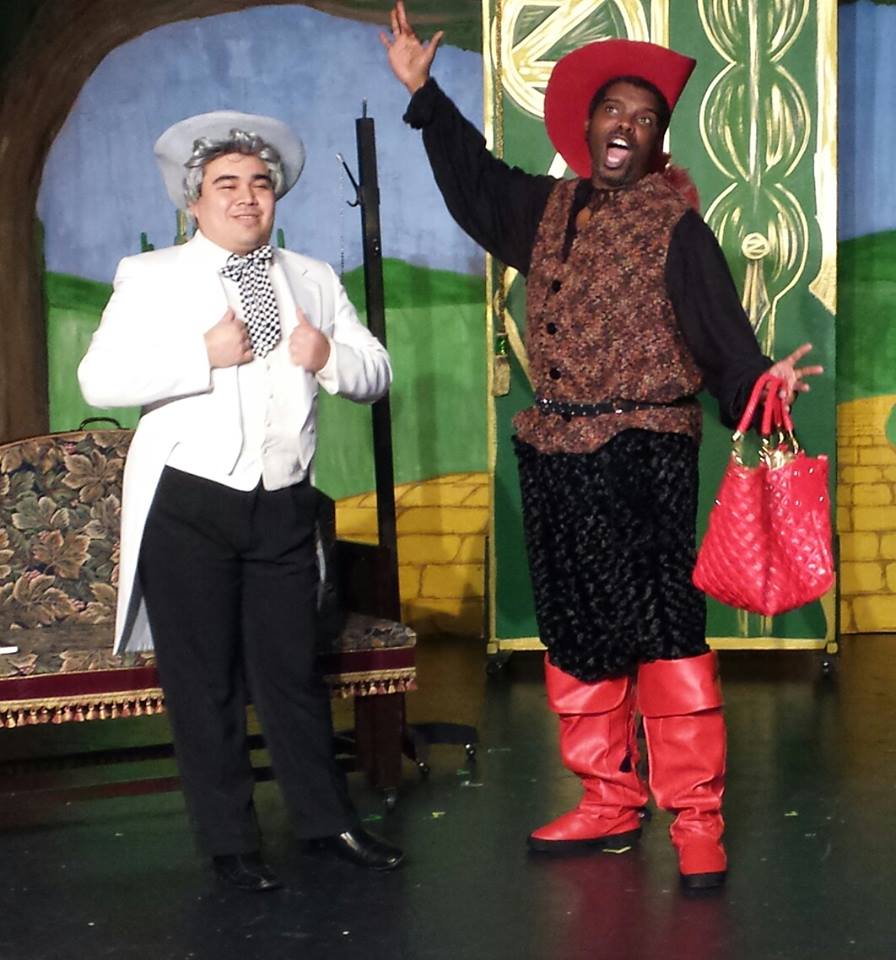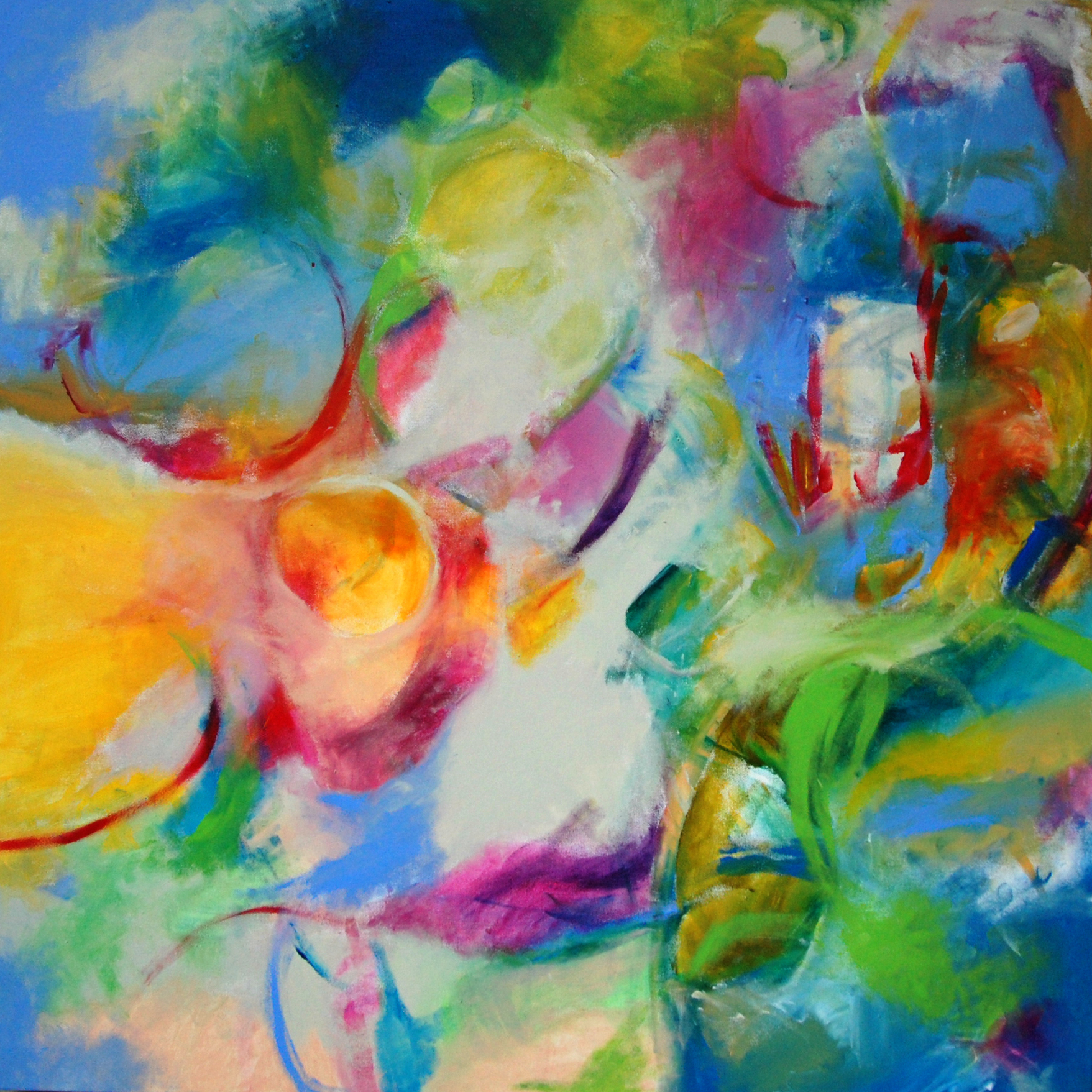
Theatre South Carolina will present The 39 Steps, a hilarious, highly theatrical reimagining of the classic Alfred Hitchcock film, February 21 through March 1 at Longstreet Theatre.
Show times for are 8pm Wednesdays-Fridays, 7pm Saturdays and 3pm on the first Sunday. There is an additional half-price late night performance on the final Saturday, March 1. Tickets for the production are $12 for students, $16 for USC faculty/staff, military personnel and seniors 60+, and $18 for the general public. Tickets can be purchased in advance by calling 803-777-2551 or by visiting the Longstreet Theatre box office, which is open Monday-Friday, 12:30pm-5:30pm, beginning Friday, February 14. Longstreet Theatre is located at 1300 Greene St.
Playwright Patrick Barlow’s inventive adaptation utilizes just four actors, portraying over 140 characters, to deftly fuse the intrigue and edge-of-your-seat suspense of Hitchcock’s 1935 film (itself inspired by John Buchan’s novel) into a fast-paced script filled with zingers, witty repartee and countless clever references to the Hitchcock oeuvre. Even with the production’s unique approach, however, the core story remains the same. Richard Hannay, our debonair hero, finds himself mixed up with Annabella, a femme fatale on the run from assassins who believe she holds information about a nefarious plan to steal vital British military secrets. When she suddenly turns up dead in his apartment, Hannay is fingered for the murder, and flees to both clear his name and save Britain. The 39 Steps was honored in 2008 with the Drama Desk Award for “Unique Theatrical Experience,” as well as multiple Tony awards and nominations. The play received Britain’s Olivier Award for “Best New Comedy” in 2007.
Two professional guest artists, who both have extensive experience with the show’s clockwork-like intricacy, are directing. Jim Helsinger, Artistic Director at the Orlando Shakespeare Theatre, directed the play at Orlando Shakes (and two other Florida venues) in 2010, with actor Brad DePlanche in one of the crucial “clown” roles. Jim Hunter, Artistic Director for Theatre SC, was the lighting designer for those Florida productions. Last year, he approached the two about bringing the amazing challenge of the show to the students at USC.
"The high-concept style of The 39 Steps requires extraordinary precision among the actors. The performances must be tightly honed choreography, like a precise dance where each moment must hit consistently,” says Hunter. "Just the kind of challenge that our graduate actors thirst for – and a great preparation for the profession."
Co-director Brad DePlanche is especially knowledgeable of the demands required of the actors, having performed in many productions of other comedies that require actors to portray multiple characters, such as Around the World in 80 Days and the Greater Tuna series.
“Between Around the World, Greater Tuna and The 39 Steps, I guess I’m just born to do this kind of piece and direct young actors in this very special, very specific trade of ‘theatre of transformation,’ where it’s not enough to just discover one character, but instead you’re playing many in the course of a single show.”
The director thinks the actors, all second-year graduate students in the MFA in Acting program, have what it takes to make those transformations happen. “This play asks each actor to reach very deep into their experiences, calling upon all those things that are mandatory – what the character wants in each scene, for example – and add physical and vocal characteristics to make each character completely different,” he explains. “These actors have been amazingly agile in terms of the demands of this show. It’s really a credit to this program that they’re as professional, and ready to be in the professional world, as they are right now.”
Critics have hailed the show as “[an] absurdly enjoyable, gleefully theatrical riff” (The New York Times), “a dizzy delight” (The NY Daily News) and “inventively astonishing” (The NY Post). DePlanche, who refers to The 39 Steps as his favorite comedy, concurs.
“For me, I loved doing it the first time, loved it more the second time, and the third time was even better than that! There’s always something to be learned with a play that is this mechanical in nature.”
With its myriad characters and forty different locations, all of the show’s elements work together seamlessly and with absolute precision. And that, DePlanche says, is all part of the fun.
“A lot of the set is representational and on wheels, so it can move quickly. On the other hand, there are these amazing costume changes for every character, so the audience gets to delight in seeing an actor exit as one character and re-enter seconds later as a completely different character. You get the feeling that a lot of the show is being made up right on the spot, that there’s no way this is scripted, and yet it all is.”
Cast in the production are Josiah Laubenstein as Richard Hannay, Melissa Reed as all of the play’s leading ladies, and James Costello and Trey Hobbs as the “clowns” who flesh out everyone else, whether man, woman…or villain. The design’s highly flexible, ever-moving scenic design is being created by third-year graduate scenic design student Xuemei Cao. Third-year graduate costume design student Caitlin Moraska is designing period-specific, quick-change costumes. The show’s film noir aesthetic will be amplified with lighting design by undergraduate theatre major Ashley Pittman.
“It’s just side-splitting,” says DePlanche. “People just need to be ready to have a great time in the theatre. For many audience members who I’ve spoken to in the last three years, this is the piece that got them, young and old, interested in theatre. It is that immediate, in your face, spontaneous and fun.”
For more information about The 39 Steps or the theatre program at the University of SC, contact Kevin Bush via phone at 803-777-9353 or email at bushk@mailbox.sc.edu.


